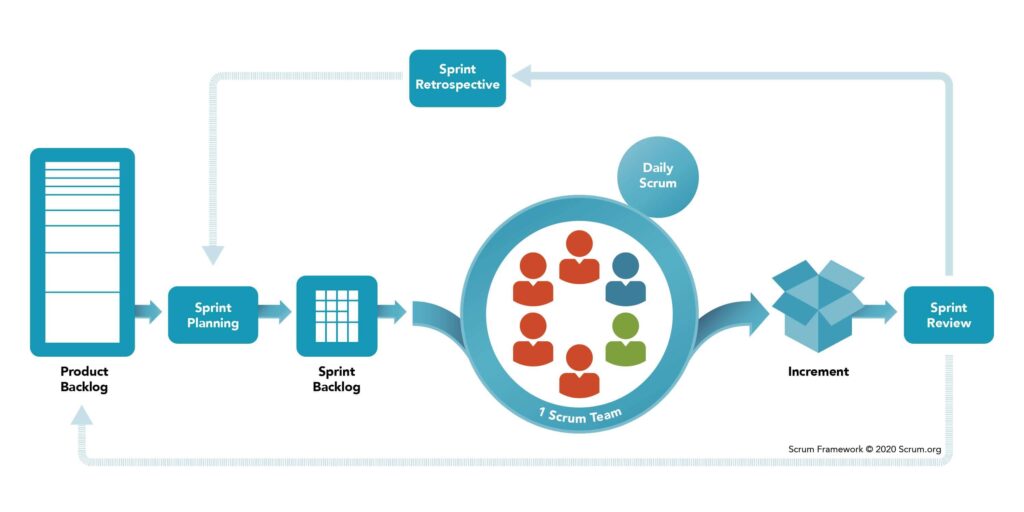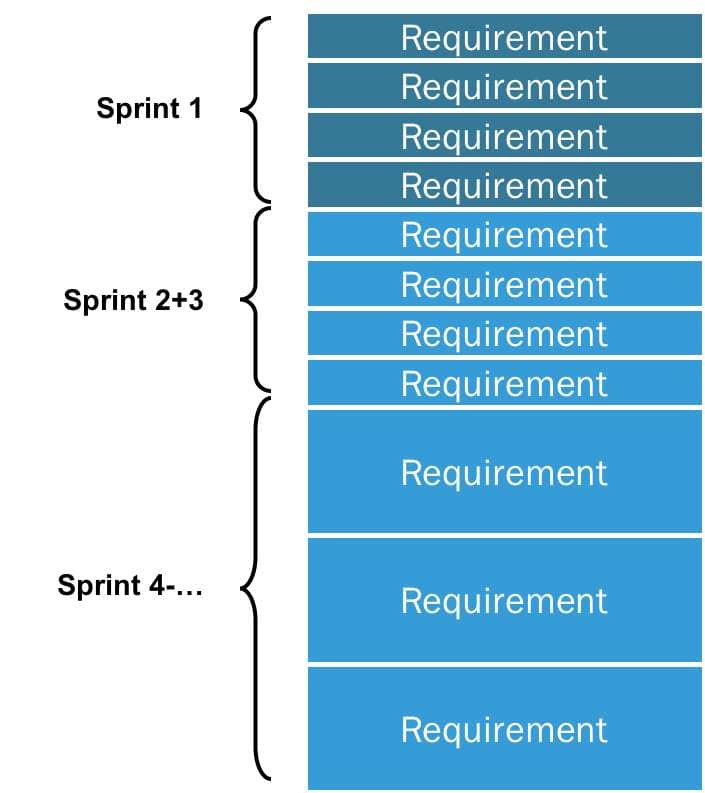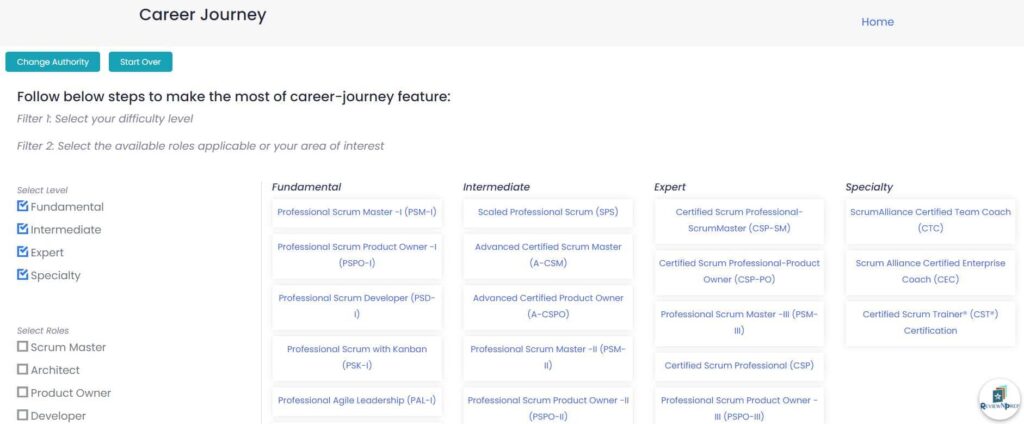What is Scrum?
Scrum is a framework for Agile software development. Simply put it is a better way of building products.
Scrum is a lightweight framework used for addressing complex adaptive problems while productively and creatively delivering products of the highest possible value. It’s simple to understand but difficult to master.
Your business needs to adapt and evolve quickly. You want to grow more agile, and it’s not easy as there are many events required when developing a product, and tracking each aspect of a project can be a Task!
Here Scrum practices come into play.
Scrum can transform project management across every industry, every business, and even across life in general. By applying Scrum, you’ll become more agile, learning how to react quickly and respond more accurately to the necessary change that comes your way.
So whether you’re working on the next smartphone app, managing logistics for a store, or planning a charity event, you should take a closer look at using Scrum. And Scrum Alliance can give you the proven framework, most reliable implementation practices, and supportive guidance you need to succeed.
Who uses scrum?
All Companies, All Sizes!!!
Scrum is one of the most widely adopted forms of project management.
You’ll find that companies you interact with regularly use some element of Scrum or Agile. There’s no limit to the types of businesses that use Scrum for product development.
Here are some of the leading organizations using Scrum and Agile practices:
Apple
Yahoo
Spotify
Adobe
Airbnb
Amazon
HSBC
Salesforce
Netflix
3M
IBM
Deloitte
Siemens
The above list makes it clear – Scrum is popular!
But why is it so? What is the reason behind Scrum’s popularity?
The straight answer is that Scrum is simple and easy to implement.
As compared to many other iterative and incremental development methodologies out there like eXtreme Programming, Crystal Clear, Agile Unified Process, etc., Scrum is on the simple side.
Not only because of its fundamental characteristics but also because it has well-documented use cases.
- With Scrum, the multiple items can be executed by the development team simultaneously rather than sequentially.
- Programmers do not wait until all things are answered. There is no need to wait till everything is crystal clear before they start to program.
- Responsibilities are prioritized by order of importance & this means typically that tasks to be completed first will probably influence the return on investment the most.
- By delivering “done” parts of prioritized work in a sprint, your product features are on the market faster than in traditional projects where developed work is released in total at the end of the project.
- The development team is critical; members, usually five to nine people, work closely and have the motto “all for one and one for all.” Their main goal in a given sprint is to finish as soon as possible.
- They also have a ScrumMaster who mentors and defends them from negative outside pressure.
- With projects driven using the Agile/Scrum method, there is greater customer/user satisfaction. A key reason for this is that the users are getting useable parts of the completed product faster.
- Everything is flexible and changeable during the development of the project. However, once the sprint work is committed in a sprint, the effort is made to not change it during the sprint.
In addition to good processes, it also comes with psychological benefits. It builds on psychological mechanisms and motivation to help teams improve their performance.
Few characteristics of Scrum are:
- Feedback is gathered from stakeholders, customers, and end-users throughout the development process.
- Swift response to changing requirements
- 1-4 week sprints provide a sense of urgency, improving the team’s speed.
- Shippable increments delivered early and frequently, allowing stakeholders to give feedback which makes the whole process efficient and satisfactory for both parties.
Let see what its key benefits are :
- Quicker release of the useable product to users and customers
- Higher quality
- Higher productivity
- Low costs
- Excellent ability to incorporate changes as they occur
- Better employee morale
- Better user satisfaction
- Being able to complete complex projects
While software development teams most frequently use Scrum, its principles and lessons can be applied to all kinds of teamwork. This is another reason for Scrum’s popularity.
Often thought of as an agile project management framework, Scrum specifies a set of meetings, tools, and roles that work in unity to help teams structure and execute their work in the most efficient way possible.
Some claim that Scrum certifications helped a lot. A variety of certifications are offered for different roles.
Scrum Masters, Product Owners, developers, trainers, and coaches can get certified by the Scrum Alliance.
Demonstrated experience and, perhaps even more importantly, continuous education helps.
With great credibility offered by both certifications and documented use cases, it’s no wonder that Scrum could earn much attention and support. Companies seeking to transition to an Agile methodology soon observe that reliable and comprehensive information on the several Agile frameworks is challenging to come by.
The reasons behind the increased performance of Scrum teams are numerous. One, of course, Scrum is a mature framework of development and project management.
Frequent iterations and continuous feedback help make sure that the delivered end product suits customer needs. The ability to change requirements on the fly makes sure the project is not hindered.
Feedback and continued contact with Scrum practitioners enable the methodology to continue evolving and gaining maturity.
What is the Scrum Framework?

Scrum is a lightweight framework that helps people, teams, and organizations generate value through adaptive solutions for complex problems.
It’s one of the most successful ways to implement agile. In this iterative approach, sprints last one to two weeks and allow the team to deliver software regularly depending on the work domain. Scrum uses a software model that follows a set of roles, responsibilities, and meetings.
In a nutshell, Scrum requires a Scrum Master to foster an environment where:
- A Product Owner orders the work for a complex problem into a Product Backlog.
- The Scrum Team turns a selection of the work into an Increment of value during a Sprint.
- The Scrum Team and its stakeholders inspect the results and adjust for the next Sprint.
- Repeat
What is a Product Backlog?

As described in the Scrum Guide, the Product Backlog is an emergent, ordered list of what is needed to improve the product. It is the single source of work undertaken by the Scrum Team.
Product Backlog items that the Scrum Team can do within one Sprint are deemed ready for selection in a Sprint Planning event. They usually acquire this degree of transparency after refining activities.
Product Backlog refinement is the act of breaking down and further defining Product Backlog items into more minor, more specific things.
It is an ongoing activity to add details, such as a description, order, and size. Attributes often vary with the domain of work.
What is a sprint in Scrum?
As described in the Scrum Guide, Sprints are the heartbeat of Scrum, where ideas are turned into value.
Sprints are fixed length events of one month or less to create consistency. A new Sprint starts immediately after the completion of the previous Sprint.
During the Sprint:
- No changes are made that would endanger the Sprint Goal;
- Quality does not decrease.
- The Product Backlog is refined as needed, and,
- The scope may be clarified and renegotiated with the Product Owner as more is learned.
What is Sprint Planning in Scrum?
Sprint Planning is an event in Scrum that defines what can be released in the upcoming Sprint and how?
According to Scrum.org: It is the opposite of a big collection of interwoven mandatory components. Scrum is not a methodology. Scrum implements the scientific method of empiricism. Scrum replaces a programmed algorithmic approach with a heuristic one, with respect for people and self-organization to deal with unpredictability and solving complex problems.
What are the different roles in Scrum?
Scrum has three roles:
- Product owner: The Product Owner is accountable for maximizing the value of the product resulting from the work of the Scrum Team. How this is done may vary widely across organizations, Scrum Teams, and individuals.
- Scrum Master: The Scrum Master is accountable for establishing Scrum as defined in the Scrum Guide. They do this by helping everyone understand Scrum theory and practice, both within the Scrum Team and the organization.
- Development team members: Developers are the people in the Scrum Team that are committed to creating any aspect of a usable Increment for each Sprint.
Which Scrum certification is right for you?
Going through Google, searching, and reading all the way can be overwhelming, and after all this effort, we are still not sure if we would get the answer to which certification to go for.
Considering this issue, Reviewnprep came up with a Career Journey tool that helps you decide which certification is best suited for you and that too in straightforward steps.
You need to follow the below steps to make the most of the career-journey feature:
Step 1: Select your difficulty level
Step 2: Select the available roles applicable or your area of interest
You can check the tool for Scrum certifications here.
Career journey tool for your learning path:

Get Scrum certified today!
With agile fast-growing standard practice at most companies scrum masters are in great demand.
Part of being Agile, rather than just doing Agile, is continuous learning. Getting a certification is a way to test your memory of that knowledge and evaluate that it is understood, rather than just being read.
Certification demonstrates your proficiency in a specific area of domain.
It shows that you can manage and execute Scrum principles into a company’s workflow.
Also, it is used by employers as part of the recruitment process.
How is ReviewNprep helping you get started with the Scrum journey?
Review N Prep came into existence from our struggles to get the right answers when preparing for certifications in our areas of interest.
There is a lot of information scattered on the internet, and with so many resources, it became hard to navigate and read through it all.
Here are some preparation journeys that will help you decide your Scrum Certification path.
- How to Prepare for Professional Scrum Master (PSM) – I certification.
- Scrum.org – PSM II Preparation Tips
- How to Prepare for Professional Scrum Master-PSM III
You can also connect with certified professionals via LinkedIn; the contact info is given in each preparation journey.
Or you can participate in our forums dedicated to helping future ‘certificants’.
We have a dedicated community of certified professionals focused on helping out beginners as well as working professionals.
This group of individuals have gone through their own certification journeys and are working with us to help us keep the reviews and our website genuine, authentic, and always fresh.
Certifications details and average salary:
- Professional Scrum Master -I (PSM-I)
- Professional Scrum Product Owner -I (PSPO-I)
- Professional Scrum Developer (PSD-I)
- Scaled Professional Scrum (SPS)
- Professional Scrum With Kanban (PSK-I)
- Certified Scrum Master (CSM)
- Advanced Certified Scrum Master (A-CSM)
- Certified Scrum Professional-ScrumMaster (CSP-SM)
Thanks for your time!
We hope we were of some help; leave us a “Review” let us know. And if you have any doubt or question troubling you, feel free to ask us in our forums. We would love to interact.

